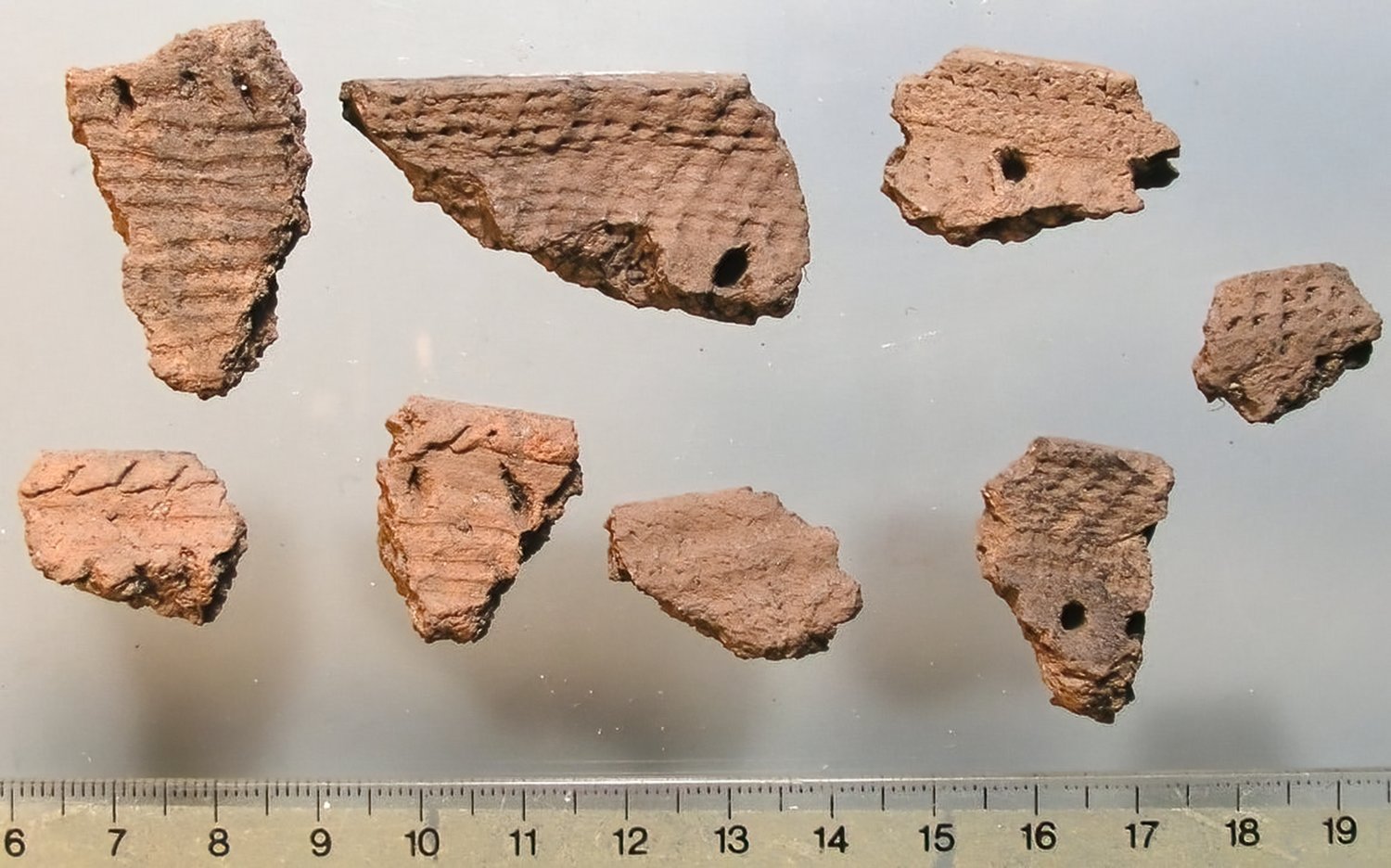Support the Timberjay by making a donation.
BWCAW ceramic sherds test at over 1,600 years old
REGIONAL- When something is over 16 centuries old, sitting in storage for 19 years, waiting to be dated, is a mere blink of an eye. After years of waiting for sufficient funding to conduct the …
This item is available in full to subscribers.
Attention subscribers
To continue reading, you will need to either log in to your subscriber account, below, or purchase a new subscription.
Please log in to continue |
BWCAW ceramic sherds test at over 1,600 years old
REGIONAL- When something is over 16 centuries old, sitting in storage for 19 years, waiting to be dated, is a mere blink of an eye.
After years of waiting for sufficient funding to conduct the necessary testing, Superior National Forest archeologists recently received lab results revealing that an ancient Native American cooking vessel discovered in the Boundary Waters Canoe Area Wilderness dates back to 1,750 – 1,600 years ago (254-403 Common Era).
Staff from the USFS Northern Research Station in Houghton, Mich., helped prepare samples of broken pieces of ceramic material, or sherds, which were analyzed by a lab at University of California-Irving. They used the Carbon 14 dating technique to analyze carbonized food residue found on the inside of the sherds to determine their time period.
The sherds’ decorative elements are associated with the Laurel Cultural Tradition, which was prevalent in the Upper Midwest and Canada approximately 2,100-1,200 years ago.
“The Laurel world was so vast, extending from Lake Superior up into Manitoba and Ontario,” said David Mather, archaeologist for the Minnesota State Historic Preservation Office. “Laurel people were the earliest in this area to adopt mound building and continental trade networks. Out of that large area, the BWCAW has perhaps the best representation and preservation of all that history. It is powerful to connect an artifact, in this case, a meal that was cooked, to a specific point in time.”
Superior National Forest Archaeologist Lee Johnson noted the significance of pinning down a date for the artifacts.
“We are fairly confident we have sites on the Forest that are as old as 9,000 or 10,000 years ago, but it is really rare for us to get a good radiocarbon date to confirm precise dates of human use,” Johnson said. “The site location and artifacts suggested a long history of ancestral Native American use of the site during the summer months for both fishing and manoomin (wild rice) processing; however, the radiocarbon date gives a really specific point of time to contextualize that use.”
Dating the ceramic cooking vessel may also provide a time context for other artifacts discovered at the BWCAW site. In 2008, an obsidian flake discovered from the site was sourced to Bear Gulch, Idaho. The flake’s origin indicates that trade networks extended there from present-day Minnesota. Researchers from Lakehead University in Thunder Bay, Ontario, also identified maize and manoomin remains on ceramic sherds and in soil samples at this site in 2010, pointing to available food sources at the time.
“It is important to get accurate dating along with utilization, to demonstrate the sophistication of the people and their land uses here for thousands of years,” said Jaylen Strong, Tribal Historic Preservation Officer for the Bois Forte Band of Chippewa. “Artifacts like this help to improve the knowledge of people who used this land that can often be misrepresented.”
Strong works with the Superior National Forest to ensure that archaeological and historic sites are managed according to federal regulation and that present-day tribes have a voice in the process.
The now-dated vessel is a significant addition to an extensive number of Laurel Culture artifacts discovered in the BWCAW and across northern Minnesota, which include chipped stone items such as projectile points, scrapers, and knives, bone, antler, and shell artifacts, ground stone items such as pipes, copper artifacts, worked mammal claws and teeth, and birch bark.
According to information from the Ontario Archaeological Society, the Laurel Culture is the first Middle Woodlands period group to use pottery. Ceramic items were decorated using stamping techniques to form impressions in the material.
A familiar structural remnant of Laurel Culture are burial mounds, including the 25-foot high Grand Mound on the Rainy River just west of International Falls. Artifacts connected to the mounds indicate the Laurel Culture had some connection with ancestral Native cultures in the Ohio Valley.
The dated vessel from the BWCAW site adds another piece to the archaeological puzzle.
“It is exciting for us to get a good radiocarbon date from the Forest, as the soils are shallow and there is a history of contamination from wildfires,” Johnson said. “The dating techniques help us in interpreting the long history of human-landscape interaction, the wide-ranging trade networks, and Native American land tenure in the Superior National Forest and the wider Border Lakes region.”






